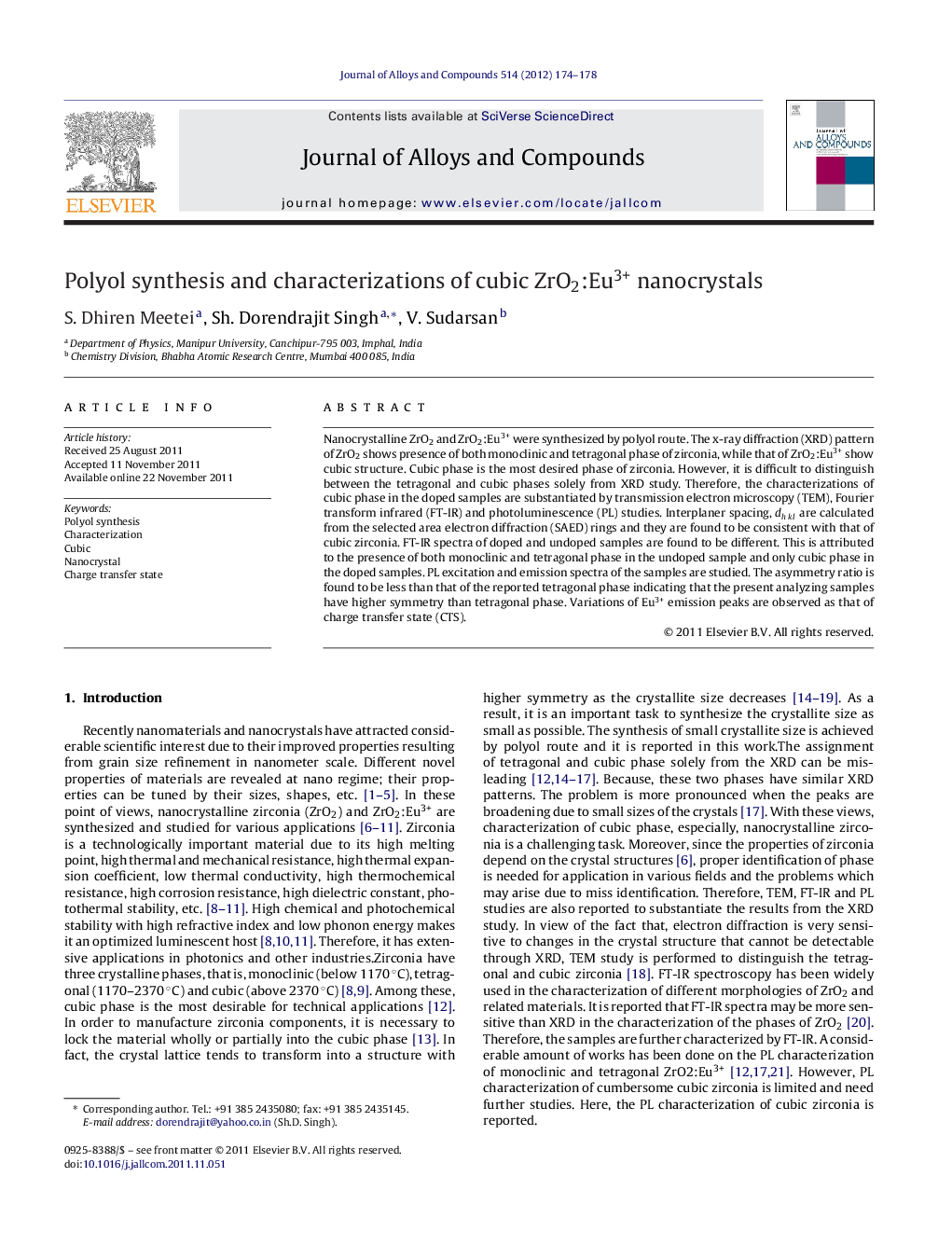| Article ID | Journal | Published Year | Pages | File Type |
|---|---|---|---|---|
| 1616404 | Journal of Alloys and Compounds | 2012 | 5 Pages |
Nanocrystalline ZrO2 and ZrO2:Eu3+ were synthesized by polyol route. The x-ray diffraction (XRD) pattern of ZrO2 shows presence of both monoclinic and tetragonal phase of zirconia, while that of ZrO2:Eu3+ show cubic structure. Cubic phase is the most desired phase of zirconia. However, it is difficult to distinguish between the tetragonal and cubic phases solely from XRD study. Therefore, the characterizations of cubic phase in the doped samples are substantiated by transmission electron microscopy (TEM), Fourier transform infrared (FT-IR) and photoluminescence (PL) studies. Interplaner spacing, dh k l are calculated from the selected area electron diffraction (SAED) rings and they are found to be consistent with that of cubic zirconia. FT-IR spectra of doped and undoped samples are found to be different. This is attributed to the presence of both monoclinic and tetragonal phase in the undoped sample and only cubic phase in the doped samples. PL excitation and emission spectra of the samples are studied. The asymmetry ratio is found to be less than that of the reported tetragonal phase indicating that the present analyzing samples have higher symmetry than tetragonal phase. Variations of Eu3+ emission peaks are observed as that of charge transfer state (CTS).
► By polyol route nanocrystalline cubic ZrO2:Eu3+ can be synthesized. ► Cubic phase is the most desirable phase of zirconia. ► Distinguishing cubic from tetragonal phase is difficult. ► Characterizations of the samples are done by XRD, TEM, FTIR and PL. ► Eu3+ emission peaks vary as charge transfer state in ZrO2:Eu3+.
